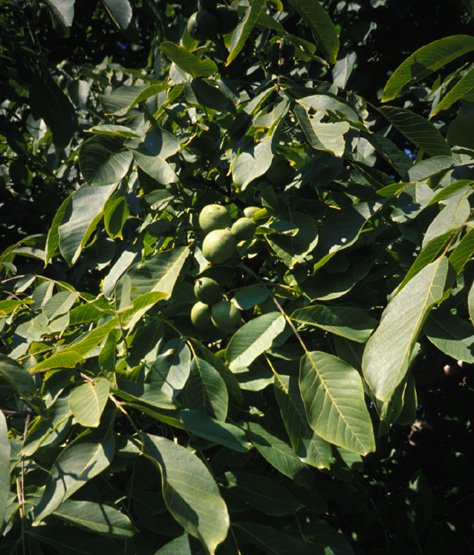
|
Nuts
|
| Nuts offer tasty, healthful, concentrated food in a natural packaging. Many nut trees thrive in western Washington. Most are easily acquired and grown. The big catch is squirrels. Unfortunately, wild animals, especially squirrels, are so adept at nut harvesting that few people can compete. Those folks who live in cities where squirrels abound, had better not bother planting nut trees. After all, we're competing with specialists --squirrels harvest tree crops every day of the year; that's what they do for a living. It is true that not all nuts are equally prone to squirrel depredation. You might as well write off the following: beech, butternut, chestnut, hickory, oak, pecan, walnut. Consider these: almond, chinquapin, filbert (hazel), ginkgo, heartnut, monkey puzzle tree, Korean pine nuts, yellow-horn (Xanthoceras). |
| There's good news. Most people live in cities, and cities usually have plenty of nut trees, and squirrels don't eat all the nuts, so in most years human foragers can garner nuts from public land, or (with permission) from private. Every nut listed above I've eaten in Seattle, except chinquapin, pecan and yellow-horn. You can learn to recognize the trees, and note the time of harvest, then try to locate specimens. Thus you have no need to grow your own --waiting sometimes for decades before the trees produce. The season, in Seattle, ranges from late June for the earliest of our native hazelnuts, into November. (Monkey puzzle tree cones disintegrate at varying times of the year, including later in winter.) Note that while isolated nut trees may bear, cross-pollination improves yields greatly. An individual ginkgo or monkey puzzle tree must be a female; the other nut species are all bisexual. |
If you do decide to try growing your own nuts, by all means read all you can about the best selections for the maritime Northwest, and for your soils and exposure. Also, be patient. Nut trees live a long time, and they're in no hurry to begin bearing. They are a long term investment. Most of the nuts we eat now are from trees planted by our parents and grandparents; most of the nut trees we plant will feed our children or grandchildren.
|
(originally written for Seattle Tilth in 1997)
Back |
|
|

